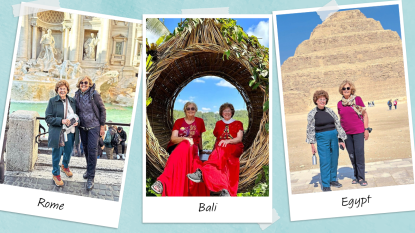Ghost Hunters Say These Are the 14 Spookiest Places on Earth — Here’s Why
Supernatural stories from around the world.
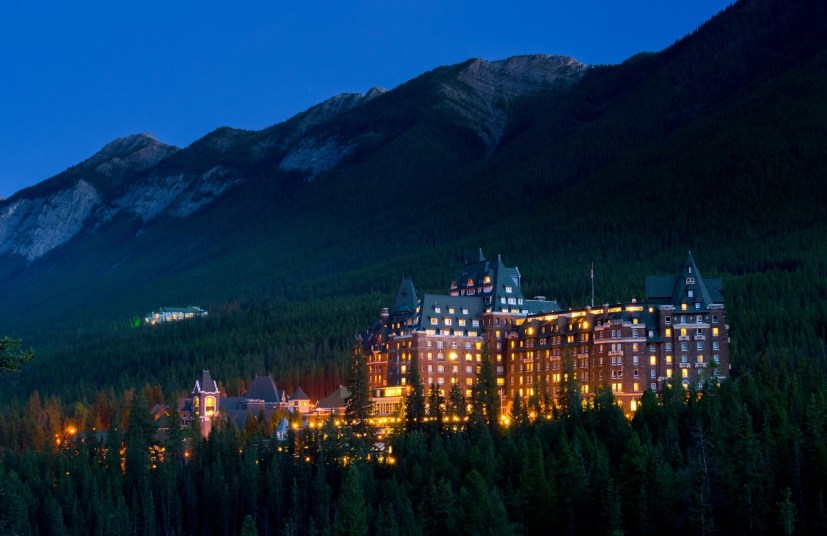
Ghosts and spooky stories aren’t exclusive to Halloween. Year-round and throughout the world, people confront the the supernatural. Mysterious noises coming from a nearby room? Books falling off shelves unprompted? An eerie presence that, although you can’t see it, makes the hairs on your neck stand up? Some spots are just plain scary. Below are 14 places made famous by their haunted history.
1. Ghosts of the South Pole (Antarctica)
Sir Edmund Hillary met the ghost of Sir Ernest Shackleton on Ross Island, while objects fly off the shelves at Wordie House. The incredible survival story of Sir Ernest Shackleton returned to the headlines in March 2022 with the discovery of the wreck of the HMS Endurance. The remains of the legendary explorer’s ship were found two miles below the ice surrounding Antarctica.
The Endurance was accurately named: Shackleton and his 27-member crew survived several harrowing months in Antarctica after the ship became trapped in the ice during an 1914 expedition. On an expedition six years prior, Shackleton and his crew had constructed a hut on Ross Island, just off the Antarctic mainland. It was here that Sir Edmund Hillary, the famed climber of Mount Everest, came face to face with Shackleton’s ghost.
“I’m not a person who really sees things very much, but when I opened the door I distinctly saw Shackleton walking toward me and welcoming me,” Hillary, who was patron of the Antarctic Heritage Trust, said in a 2005 video interview. “It’s the only time I can ever remember something like that.”
Recent Recollections
The hut was prefabricated in England and shipped to the Antarctic. There, it was rebuilt to house 14 men along with dog kennels, stables for horses, a meteorological station, and a partially constructed laboratory. Tinned and dried food, including mock-turtle soup and raspberries, remain at the site more than 100 years after they were placed there by Shackleton’s men.
Indeed, Antarctica’s history is rife with ghost stories, including other spooky accounts from Ross Island. At the site’s McMurdo Station, one female worker recalled seeing spirits from a 1979 Air New Zealand crash that killed 257 people on the island’s Mt. Erebus. She told The Timaru Herald in 2007 that “ghosts from the Erebus plane haunt the big gym” at the facility.
Time Stands Still
On Ross Island’s Cape Evans, you’ll find Scott’s Hut, once occupied by members of an expedition far unluckier than Shackleton’s. It was from here that Captain Robert Falcon Scott and his ill-fated British Antarctic expedition established a base camp in 1911. Scott and a ragtag group of explorers reached that southernmost point. However, they died on their return journey, just 11 miles from the safety of a depot. “We shall stick it out to the end, but we are getting weaker, of course, and the end cannot be far,” Scott wrote in his final diary entry. “It seems a pity, but I do not think I can write more.”
To this day, Scott’s Hut remains frozen in time. Cans of food are on the shelves and an issue of The Illustrated London News on a desk. Visitors to the site say they’ve experienced feelings of dread. Many claim to have seen shadowy figures and heard footsteps and voices from inside the structure. They’ve also had the peculiar sensation of being watched — surveyed, perhaps, by century-old spirits. Behind the hut stands a simple cross. This serves as a memorial to the three fallen members of the Ross Sea Party, a support team tasked with deploying depots for Shackleton’s Endurance crew.
Antarctica’s Unexplained Anomalies
Other outposts around Antarctica have their own creepy tales to share. Paranormal researchers trekked to Wordie House — a 1947 structure on Winter Island named for another member of Shackleton’s Endurance expedition — for a 2011 episode of Syfy’s Destination Truth. Those researchers experienced phenomena they could not explain. Objects fell from shelves. Doors slammed. The sound of a light switch flicking on and off came from an empty room. The echo of footsteps came from behind a closed door. Perhaps the adventurers from Antarctica’s “Heroic Age of Antarctic Exploration” haven’t finished roaming the icy continent.
2. The Colosseum (Italy)
Centuries of bloodshed at this ancient Roman arena have left behind an unsettling atmosphere, especially in the dungeons where gladiators prepared to fight to the death.
Built between A.D. 72 and 80 by the emperors Vespasian and Titus, the Colosseum — also known as the Flavian Amphitheatre — was where 50,000 Romans would gather to watch deadly gladiatorial games, animal hunts and maulings, public executions, and even mock sea battles. Historian Cameron Hawkins estimated in 2010 that 5,000 gladiators — many of them enslaved people — lost their lives at the Colosseum every year until the end of the fifth century.
Ghosts of the Gladiators
It seems that these slain souls have never left the 6-acre site where they died. Employees and visitors at the historic landmark have heard screams, cheers, and growls from unoccupied parts of the amphitheater. They’ve seen ghostly figures roaming the vaults, sometimes dragging chains. Unseen presences have pushed people.
Some claim the Colosseum was one of seven gates to hell. That reputation stands to reason. Many gladiators met grisly ends here. Their bodies were carried through the Porta Libitinaria, a door named for the goddess of funerals, Libitina, and dubbed the Gate of Death. That entryway connects to the Colosseum dungeons — opened to the public for the first time in 2010 — where gladiators prepared for battle and where wild animals were kept in cages before being sent to the arena through trapdoors. In these subterranean catacombs, both man and beast faced near-certain doom. “I think it was very crowded, very hot and had a terrible smell,” Colosseum restoration architect Barbara Nazzaro said in 2011, per The Dallas Morning News. “I think you could really smell the fear.”
That terror is understandable, considering how the hordes of bloodthirsty spectators at the Colosseum demanded death. When gladiators were defeated by their opponents, attendants confirmed their death by prodding them with a hot iron. If they flinched, they were struck in the head with a mallet.

Lasting Lore and Legends
Other legends surround the Colosseum, including one that suggests the famed structure once housed a temple to the demon Beelzebub, where newcomers were asked, “Colis sum?” — “Do you adore him?” in Latin. To those who believe this story, that question about fealty to the prince of the devils is the true origin of the stadium’s name.
Meanwhile, other tales claim that the poet Virgil performed magic inside the building, or that witches and sorcerers in the Middle Ages brewed potions from the non-native vegetation brought to the Colosseum for “silvae,” or staged hunts. Tour guides now lead brave tourists around the Colosseum day and night. Some even venture into the underground chambers. The guides often speak of an unsettling energy in the depths of the arena. Chills are apparently felt even on the hottest summer days.
3. Emily’s Bridge (Vermont)
The beauty of Vermont’s covered bridges lures photographers from all over the world. But tourists head to Gold Brook Covered Bridge, better known as Emily’s Bridge, for an entirely darker reason. The supernatural reputation of Emily’s Bridge makes it a hot destination for visitors, even international ones, according to Steve Perkins of the Vermont Historical Society.
The stories about the single-lane, 50-foot bridge vary, but they never end well for the structure’s namesake. “In all of them, she dies,” Perkins said. According to one legend, Emily was a 19th-century woman whose parents forbade her from marrying her beloved. The couple made plans to meet at the bridge at dark and run away to start a new life together. When her beau didn’t show, a despondent Emily hanged herself from the rafters of the bridge.
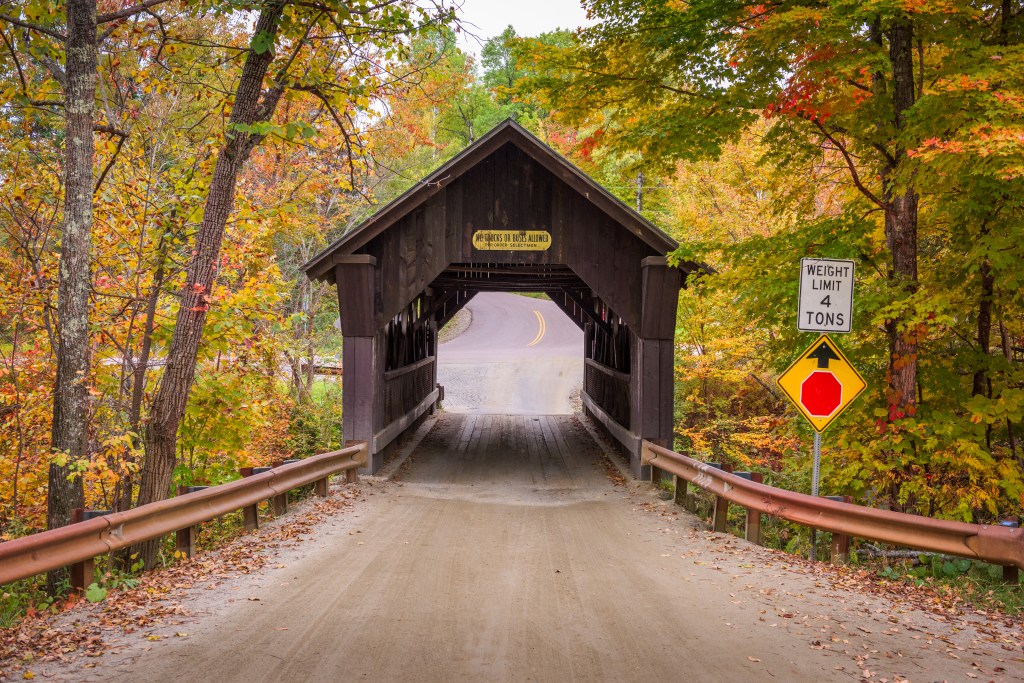
In another version of the tragic story, Emily planned to marry her lover at a nearby church. When he bailed on the nuptials, the jilted bride sped away from the church — by carriage or by car — and fell to her death in the rocky brook beneath the crossing.
No matter what the truth is, visitors report feeling Emily’s presence to this day. There have been stories of cars gouged with claw marks and eerie voices coming from inside the 1844 structure. Local ghost hunter Joseph Citro called Emily “Vermont’s most famous spook.” In 2013, the Stowe Reporter made note of the “maniacal laughter” that locals can hear coming from the bridge after dark — not from Emily, but from late-night revelers who apparently don’t mind sipping spirits with a spirit!
4. Fairmont Banff Springs Hotel (Canada)
A young bride descends a grand staircase in the Banff Springs Hotel, readying to tie the knot with her groom. As she walks down the marble steps, something startles her, and she slips and falls. So begins the “Ghost Bride” story that has haunted this spectacular hotel in Alberta, Canada, since the 1920s. The woman’s cause of death is up for debate. Some say the star-crossed bride snagged her heel in the hem of her dress, as Avenue Calgary magazine reports. Others contend her dress brushed up against a candle and went up in flames.
Either way, the Ghost Bride has wandered the halls of the 1880-era hotel ever since, according to guests and employees. Eyewitnesses have seen a veiled woman walking the stairs of the hotel, which is now a Fairmont resort. They’ve also spotted her dancing in an upstairs ballroom, an eerie reminder of the wedding she never had.
Staff at the Fairmont Banff Springs also believe certain rooms are haunted. According to local lore, one room, which is purportedly kept off-limits for renovation purposes, is where an entire family was murdered. Screams and bloody handprints have have awoken and frightened guests over the years, according to the magazine.
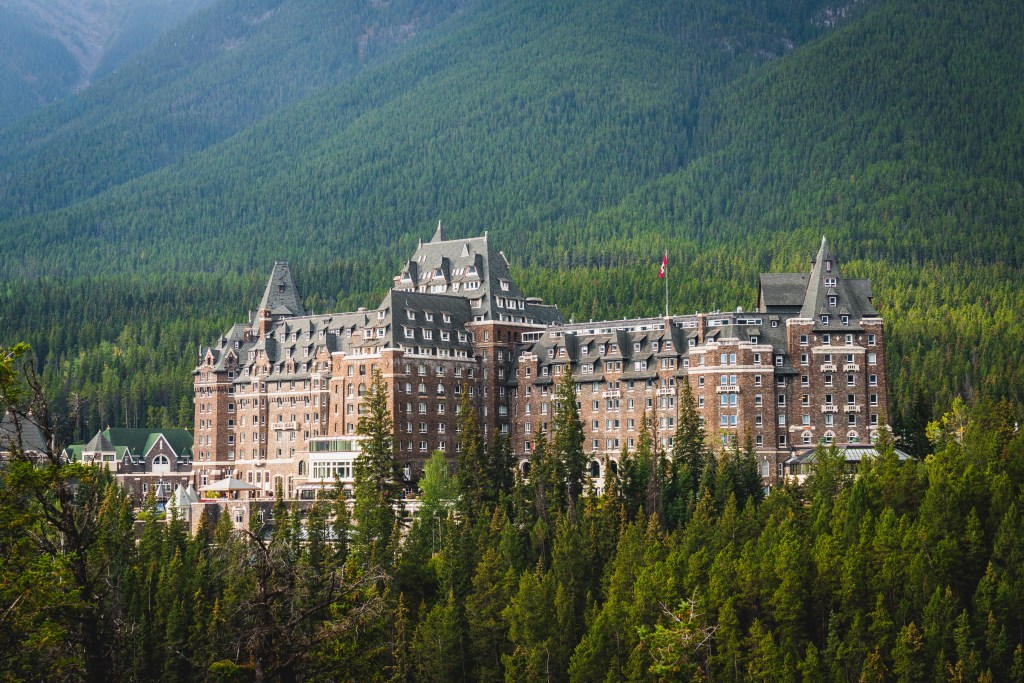
Interestingly, the Fairmont website actually does make mention of the Ghost Bride: It’s the name of a locally brewed beer on the room service menu. Not all ghosts at the historic hotel are ghoulish, though. Guests have also reported interacting with a helpful employee who matches the description of Sam McCauley, a friendly old Scotsman who was head bellman at the Banff Springs until he died in 1975.
5. One if by Land, Two if by Sea (New York)
Heads up, Hamilton fans: Aaron Burr and his “dear Theodosia” are two of 20 ghosts reported at this romantic NYC restaurant. One if by Land, Two if by Sea, a New York City institution that Architectural Digest readers once voted as one of the most romantic restaurants in the world, might also be one of the most haunted. Aaron Burr, the third US vice president and the man who infamously killed Alexander Hamilton in a duel, is said to still roam the building, which once served as his carriage house. Burr’s daughter, Theodosia, who vanished at sea en route to New York in 1812, also makes her presence known. Theodosia’s disappearance has been a centuries-long mystery. Some speculate that she was captured and murdered by pirates commanded by privateer Jean Lafitte. Now, her ghost steals earrings from diners, according to reports.
In fact, a parapsychologist once tallied 20 ghosts active at the West Village eatery. They asserted that the spirits hail from different eras, but are all aware of each other. Staff members have even been so spooked by the specters that they’ve quit their jobs.
“I’ve had experiences. Inexplicable experiences,” Rosanne Martino, the restaurant’s general manager, told the website Eater in 2011. “I’ve been here for eight years, and I have seen a lot.” She said she saw machinery starting up randomly, lights flickering, picture frames tilting, plates flying, unseen forces giving staff members a shove, and waiters interacting with ghosts seated at tables. Kirk Adair, another employee, likened the restaurant to a forest, with beings lurking just out of sight.
6. Jazirat Al Hamra (United Arab Emirates)
Just south of the United Arab Emirates city of Ras Al Khaimah lies Jazirat Al Hamra. The village was abandoned decades ago as the area’s pearling industry declined and a new Al Hamra village was built farther up the road. The old Al Hamra is a ghost town these days, not just because of the hundreds of empty buildings made of coral and stone, but because of the stories of terrifying djinn that draw curious tourists from all corners of the globe.
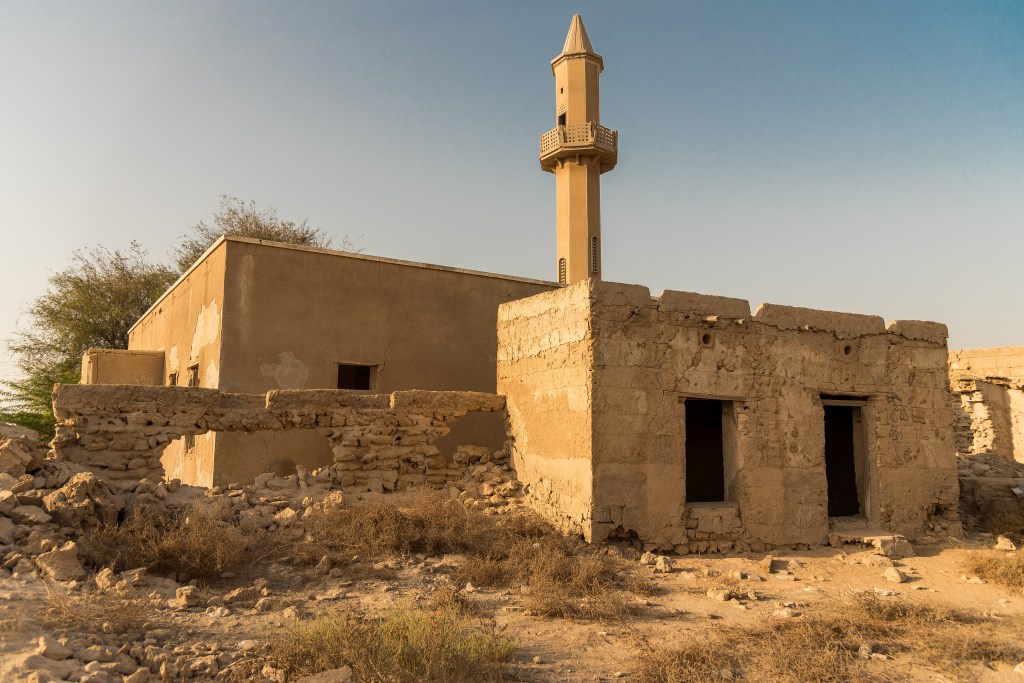
Understanding the Djinn
Djinn, or jinn, are spiritual entities that “live and operate in both manifest and invisible,” scholar Amira El-Zein wrote in Islam, Arabs, and the Intelligent World of the Jinn. Some locals at Al Hamra would rather not discuss the djinn, as The National newspaper reported in 2013. One fisherman complained about the ghost hunters stalking the area, saying horror stories like the one in Djinn, a 2013 film set in the village, are “all advertising.”
Others, however, were eager to share what happened to them in the depths of the Persian Gulf. “When I would go down to catch the oyster, the pearls, the djinn would be clapping,” Saif Rashed told The National. “They used to slap us, too, and we’d faint under the sea.” When sailors pulled their unconscious peers from the water, they’d recite prayers and ask the djinn what prompted the possession. Sometimes, they’d hear a response in a soft voice. One Emirati man, identified only as Ali, told the newspaper there are djinn “everywhere” in the area. “But we see them on top of the sea, naked with slit eyes and scars,” he said. “They are so frightening, your hair stands on end.”
7. St. Augustine Lighthouse (Florida)
This landmark lighthouse on Florida’s Atlantic coast was haunted even before its 1874 completion. Tragedy struck here on July 10, 1873. Four young girls — including construction superintendent Hezekiah Pittee’s three daughters, Mary, 15, Eliza, 13, and Carrie, 4 — took a fatal ride in a railway cart that workers used to transport supplies from ships docked below.
The children had ridden this makeshift roller coaster before, as the lighthouse museum’s website notes. But on this day, the wooden board at the end of the track was not in place. The cart upended into the water, trapping its occupants beneath. Three of the girls drowned by the time the cart was lifted. Only Carrie, the youngest, survived.
Since then, decades of sinister ghost stories have given the lighthouse a dark reputation. The final lighthouse keeper fled the keepers’ house in the 1950s, vowing not to “stay another night.” Later, a man who rented the home recounted waking up one night to find a girl standing beside his bed. Then, in 1970, a mysterious fire burned the house to its foundation.
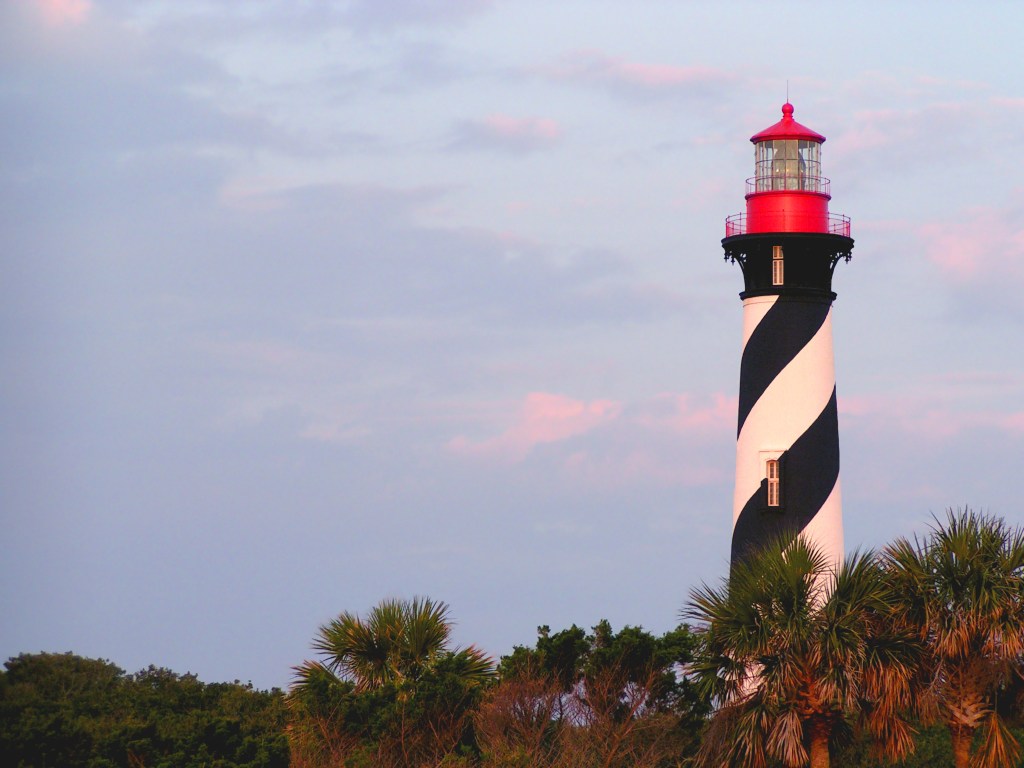
That’s not all. Staff have reported hearing giggling coming from the empty lighthouse. A woman touring the 165-foot tower after dark found that someone had tied her shoelace to the metal staircase. Another tourist came upon a girl in Victorian dress sitting on a nearby bench. And a ghost hunter’s electromagnetic field (EMF) meter spiked whenever she asked unseen spirits if they wanted to play hide-and-seek. It appears the Pittee girls are gone but refuse to be forgotten.
8. Angkor Wat (Cambodia)
Venture into Cambodia’s Siem Reap region and you’ll find yourself in awe of a complex of stone temples, a remnant of the capital of the Khmer Empire that ranks as the world’s largest pre-industrial city.
Angkor Wat was built by Khmer ruler Suryavarman II in the 12th century to honor Hindu god Vishnu, and the city of Angkor grew over the years to house some 750,000 residents. Around the time the Khmer shifted from Hinduism to Buddhism, though, its rulers decamped for a new seat of power near the modern-day city of Phnom Penh, the current capital of Cambodia, for reasons never fully understood. As a result, Angkor Wat fell into disrepair, with vines and moss reclaiming the structure. Now, the eerie, overgrown stonework at this pilgrimage site is a tourist fixation, attracting millions of visitors each year.
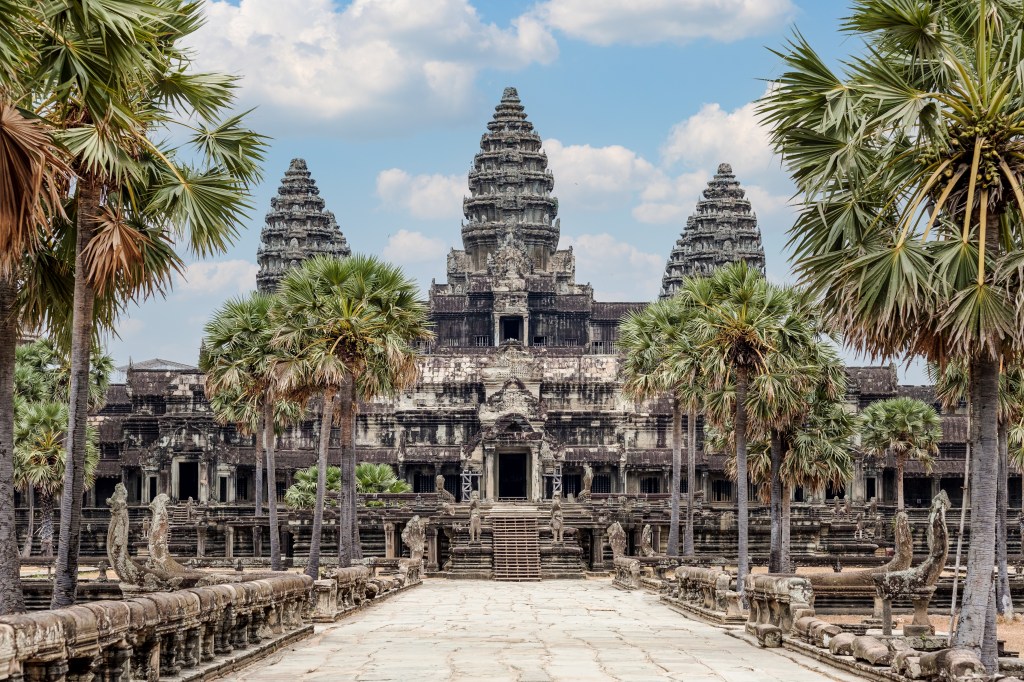
Some of those tourists have described weird sensations at Angkor Wat. One said they had a “creepy feeling” walking alone among the crumbling walls. In a 2007 episode of Destination Truth, one man said he was grabbed by a 10-foot-tall spirit at the temple. In the same episode, another recounted a spirit kicking him down a staircase at the temple. This left him unconscious for hours.
Perhaps it’s no surprise that monks offer red string bracelets to tourists at Angkor Wat. The threads are said to offer protection and absorb negative energy. With the easing of the COVID-19 global pandemic, tourists have returned to Angkor Wat. The temple has once again resumed its place as a favorite spot to visit.
9. Hofdi House (Iceland)
One day in October 1986, at a wood-framed house in the Icelandic capital of Reykjavik, two men sat together in a pine-paneled room with views of Faxaflói Bay and the mountains on the horizon, changing the course of world history. The two men were Soviet leader Mikhail Gorbachev and US President Ronald Reagan. The duo were convening for a summit that would mark the beginning of the end of the Cold War. But who could say whether either one of them knew of Höfði House’s haunted history?
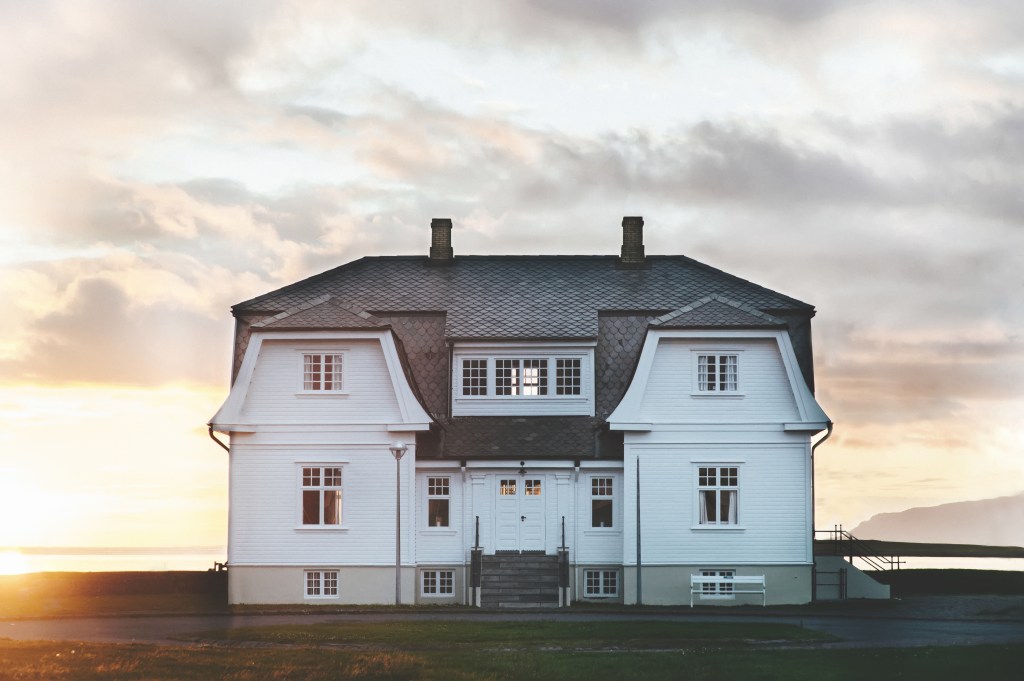
Höfði was built in 1909 for a French consul. However, it later served as the residence of the British consul, hosting high-profile visitors like Queen Elizabeth II, British Prime Minister Winston Churchill, and actress Marlene Dietrich. At other times, the painter Louisa Matthíasdóttir and the poet and lawyer Einar Benediktsson called Höfði home.
Legend has it Benediktsson, who lived there from 1913 to 1925, was haunted by a woman who poisoned herself after losing a custody case in which he was involved. The woman’s ghost terrorized the writer — so much that he slept with the lights on at Höfði. Eventually, he ultimately gave up the house.
Another story claims the ghost haunting the home is the spirit of a woman whose body washed ashore in front of the house. In any case, the frights were enough for John Greenway, a British diplomat who lived in Höfði, to flee the scene in 1952. After spotting a “white lady” wandering the halls, hearing bumps in the night, and having picture frames fall from the walls, Greenway insisted that the British Foreign Office sell the building.
10. House of the Seven Gables (Massachusetts)
Officially, this Colonial house is the Tuner-Ingersoll Mansion. It was named after John Turner I, the merchant who built it in 1668, and Samuel Ingersoll, the ship captain who bought it a century later. However, fans and locals in Salem, Massachusetts, call the foreboding structure the House of the Seven Gables, since it inspired Nathaniel Hawthorne’s 1851 book of the same name.
In the first chapter of that Gothic masterpiece, Hawthorne described the house as “a great human heart…full of rich and sombre reminiscences.” He adds that one could not pass it “without the idea that it had secrets to keep.” (Hawthorne had his own somber reminiscences: He considered his family cursed since his great-grandfather found more than 100 women guilty of witchcraft during the Salem witch trials.)
The Turner-Ingersoll Mansion – which Hawthorne once frequented as a second cousin of heiress Susanna Ingersoll — is now a museum with a haunted reputation. Visitors have seen ghostly figures, like a man shuffling up and down the house’s secret staircase. Others recall a young boy playing in the attic. They’ve heard a disembodied voice murmuring in their ears. People have felt queasy and light-headed inside the clapboarded walls. They’ve spotted the ghost of Susan Ingersoll peering out a window at the intruders on her property.
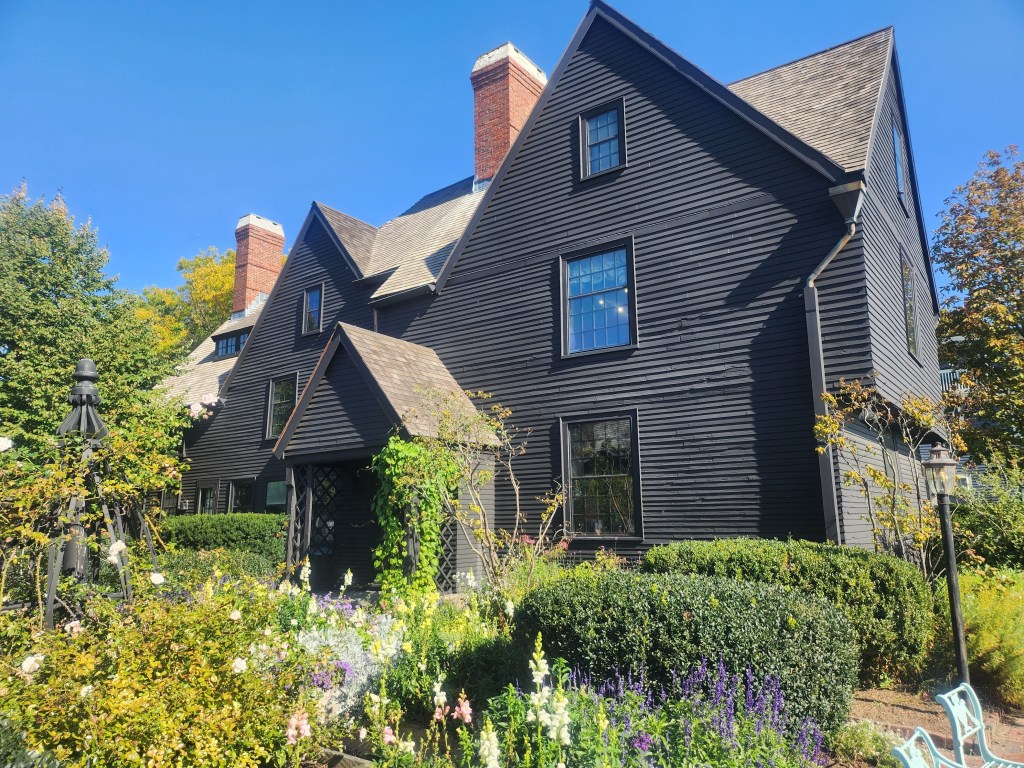
Even museum staff have reported the presence of an otherworldly being. People have reported lights and faucets turning on and off without any living being touching them. It seems Hawthorne was right when he wrote the House of the Seven Gables has “a life of its own.”
11. Nederlander Theater (Illinois)
Theatergoers who wait at the stage door of Chicago’s Nederlander Theatre might not realize they’re standing in the so-called “Alley of Death,” a grim reminder of the deadliest theater fire in American history.

For a matinee showing of Mr. Bluebeard on December 30, 1903, more than 1,700 people crowded into what was then the Iroquois Theatre. The supposedly fireproof venue was hastily constructed just weeks prior. Midway through the second act, a backdrop caught fire, and the blaze quickly became a raging inferno. Fleeing audience members were thwarted at every turn. Emergency doors weren’t clearly marked and had unfamiliar locking mechanisms. The doors were also designed to open inward and thus couldn’t open against the crush of evacuees. People in the upper levels of the theater were trapped by locked gates. A fire curtain only lowered halfway. A skylight that could have vented the fire was nailed shut. Being winter, fire escapes had frozen in place. And when cast members opened a stage door, the backdraft caused a deadly fireball to rip through the theater.
Some people unsuccessfully tried jumping out of the back of the theater. Others tried crossing makeshift bridges to a neighboring building for safety. However, only a few survived the fall because other bodies cushioned the impact. Within just half an hour, more than 600 people — a third of the audience — were dead.
The Spirits That Linger
Today, however, the Nederlander, built on the same spot in 1926 and previously known as the Oriental Theater, welcomes hundreds of theatergoers for each show. While most don’t know about the site’s tragic history, some who have walked down the alley have reported feeling a chilly breeze on muggy days. Others have heard an unseen person whispering their name. Some unlucky folk reported feeling hands on their shoulders, urging them to turn around.
12. Xunantunich (Belize)
History buffs, be warned: You’ll see more than archaeological ruins at this site in San Jose Succotz, Belize. Several visitors have encountered a phantom that rises from its stone bricks. They say it’s the frightful figure of a woman with black hair and eyes that glow red like embers.
Xunantunich is believed to have been the regional capital during the Maya civilization’s Classic period — its golden age. It’s a complex of palaces, temples, and plazas that date as far back as the year 300. Its El Castillo pyramid rises 130 feet above the jungle floor, ranking as the second-tallest Maya structure in Belize.
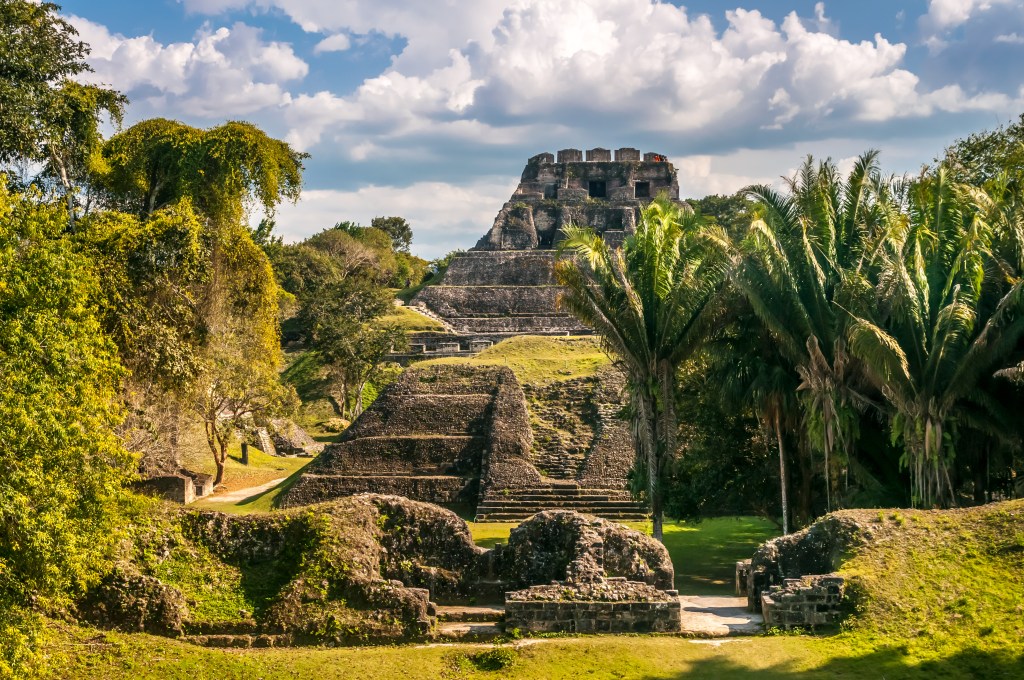
According to local legend, a spectral figure known as the Stone Woman appears dressed in white — perhaps in a traditional Maya huipil garment — and walks the stairs of El Castillo before vanishing into a stone frieze. Some speculate she died in a human sacrifice performed, according to ritual, atop the pyramid.
One story goes that at the end of the 19th century, a hunter from a nearby village saw the Stone Woman at the mouth of a tunnel beneath the structure, her figure illuminated by the morning sun. The hunter dropped his gun and ran for help. By the time he returned to the site with a priest, the woman was nowhere to be found. Now, more than a century later, the site and the legend are forever linked. The name Xunantunich even translates to “maiden of the rock” or “stone lady.”
13. Eden Brown Estate (St. Kitts and Nevis)
Plantations from the era of the Atlantic slave trade carry somber histories. They’re laden with decades or even centuries of human cruelty and suffering. But Eden Brown Estate, a site in Saint James Windward Parish on the east coast of the Caribbean island of Nevis, is also haunted by the story of a wedding gone disastrously wrong.
In 1822, Julia Huggins, an heiress to the 1740s-era sugar and cotton plantation, was set to be married to Walter Maynard, a young man from a neighboring estate. (Julia was the daughter of Edward Huggins, who was infamously brought to trial on charges of cruelty toward his enslaved workers but ultimately acquitted by a jury of other white plantation owners.)
Despite the impending union of their families, the Higgins and the Maynard families were openly hostile toward one another. It’s said that at the prenuptial feast, the groom and best man shot and killed each other in a duel. Julia became a heartbroken recluse, dying as a spinster years later, while the plantation was closed and left to rot.
Because of this bloody history, Eden Brown Estate is considered Nevis’ most haunted place. There have been numerous reports of Julia, John, and Walter roaming the overgrown site under the full moon. A representative for the Nevis Tourism Authority told the website Ancient Origins in 2017 that visitors to the plantation ruins have heard Julia’s “wails of sorrow” and spotted her “on the steps of the house, wearing a tattered wedding gown.”
14. Langham Hotel (England)
The most haunted hotel room in London, the dreaded Room 333, happens to be in one of the city’s most hallowed hotels. Opened in 1865, the Langham Hotel has welcomed luminaries like politicians Winston Churchill and Charles de Gaulle, writer Arthur Conan Doyle, and Princess Diana. But the palatial building has also hosted up to seven ghosts over the decades. This includes a doctor who killed his wife and himself while on honeymoon, and a soldier who jumped from a balcony.
Supernatural activity, however, seems to focus on Room 333. The Langham website even shared BBC radio announcer James Alexander-Gordon’s tale of staying in the room in 1973. Alexander-Gordon “awoke suddenly in the night to see a fluorescent ball which slowly took on the shape of a man wearing Victorian evening wear.” He fled after the ghost “began to float toward him, with its legs cut off some two feet below the ground, arms outstretched, eyes staring emptily.”
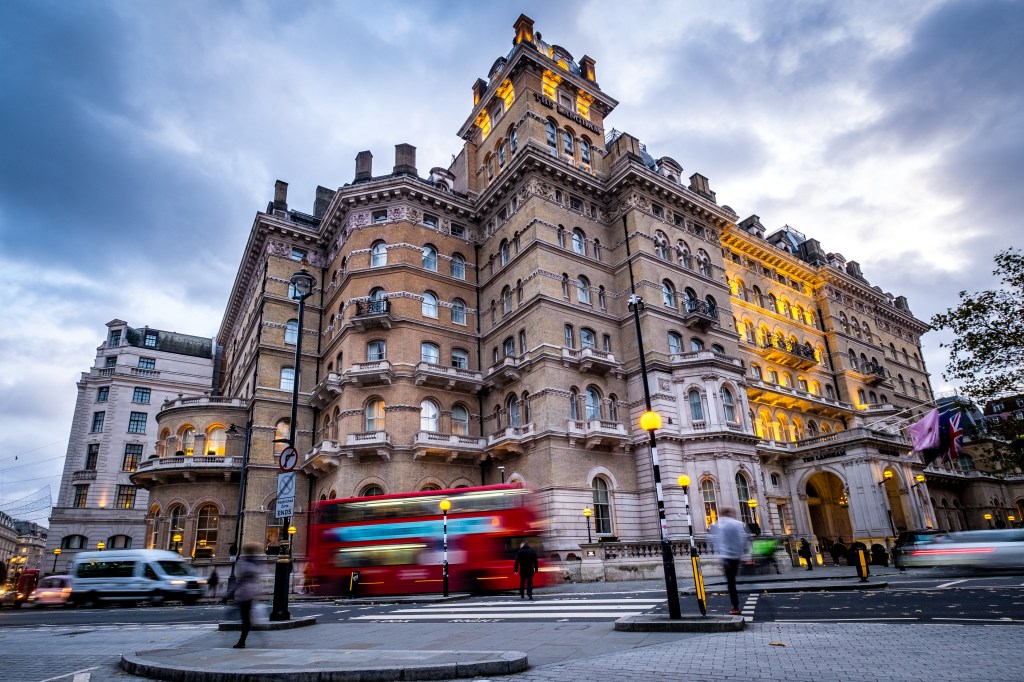
In 2014, more than 40 years later, English cricketers had trouble sleeping and asked for alternate accommodations during their stay at the Langham. Fast bowler Stuart Broad said he was kept awake by sweltering temperatures and lights and taps that turned on and off. “It really freaked me out. I ended up asking to move rooms,” he told the Daily Mail. He added that his teammates and their partners were also spooked by the hotel’s ghosts. “I was convinced there was a presence in the room. It was the weirdest feeling.”
A version of this article appeared in our partner magazine World’s Scariest Places.













